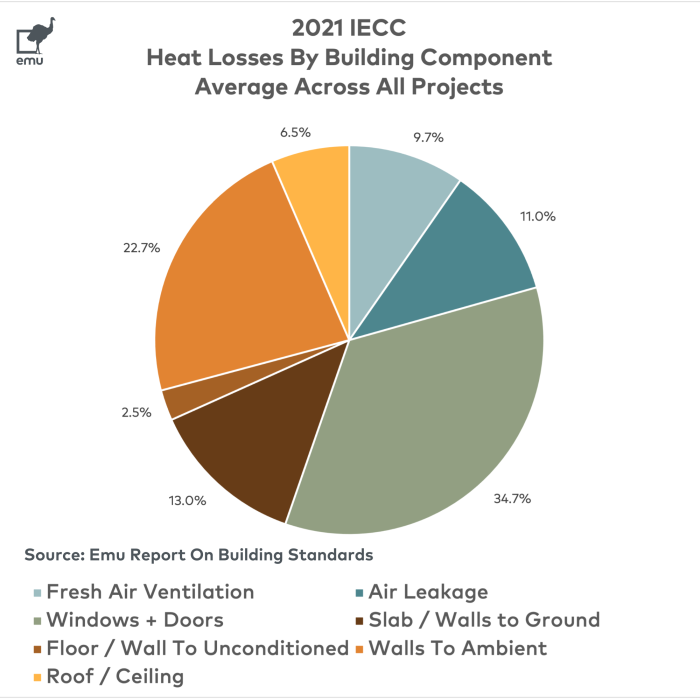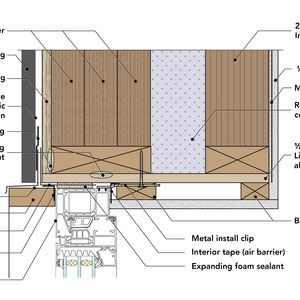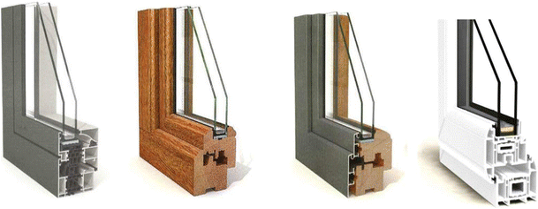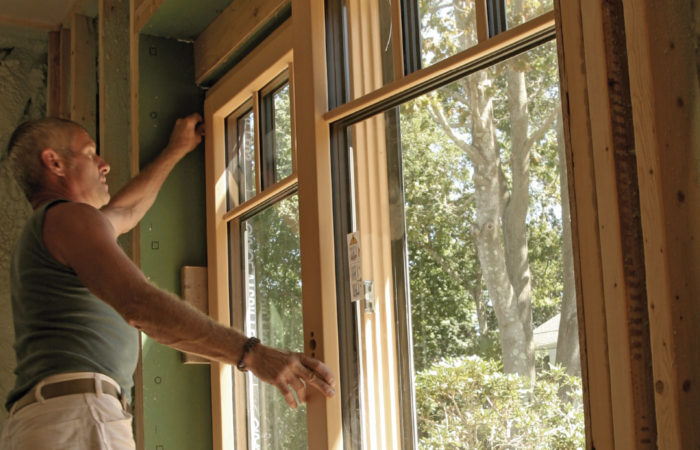
Windows and exterior doors are crucial elements of any building. They let daylight in while keeping wind and rain out, and they connect the building to the outside both in terms of access and views. They also cost a lot of money, can be a source of thermal discomfort, and have a significant impact on a building’s energy performance.
In this article, I will cover the most important features that make windows (and doors) perform better—or worse—and provide tips for selecting better products. These are lessons learned from Emu Passive’s continuous research in the field of building science, and the work we do on Passive House projects across the U.S. While you may not be pursuing a green building certification, you may find this information useful for your project.
Study findings
Some of the data referenced here comes from a study we recently published, “Emu Report On Building Standards,” which is available for free download, and on YouTube. We investigated 50 single-family projects in different U.S. climate zones, and compared the results in terms of energy efficiency, indoor air quality, thermal comfort, etc.
One of the more interesting results from the study was that windows are the No. 1 source of heat loss in a new home, about three times higher than all air leaks of the house combined (including air leaks at the windows).

Above are typical heat losses in a home according to the most recent energy code (2021 IECC), divided by building component. Here, the air leakage through the windows is grouped together with the overall air leakage (dark blue). The heat losses shown as “windows + exterior doors” (green) refer to the conduction heat losses through the window glass, frame, glass edge, and window-to-wall connection. Interestingly, the same breakdown also happens in…
Weekly Newsletter
Get building science and energy efficiency advice, plus special offers, in your inbox.

This article is only available to GBA Prime Members
Sign up for a free trial and get instant access to this article as well as GBA’s complete library of premium articles and construction details.
Start Free TrialAlready a member? Log in















3 Comments
Thank you for this article. It is very helpful to have all of this information summarized in one place - no surprise, since Emu Passive is so committed to education and training. Cheers!
Great article, well written and lots of good information. Thank you.
Table N1102.1.3 on the 2021 IRC shows approved wall assemblies with R13 or R20 +5ci for CZ3-8, which IMO could make it the most common, affordable and perhaps easiest to build for most “regular” builders.
Do you happen to have a comment and/or picture of heat loses on a flanged window installed over a 1x4 buck which is over the R5 rigid foam?
See referenced attached detail.
Great article. However.
I am a native of Northern California. I moved to one of the most expensive Zip Codes in the country in Westchester County, NY a decade ago. I have yet to fine a Builder and Architect that knows how to retrofit my 1950s house to Pretty Good House standards by converting my 2 x 4 R-13 exterior walls to R-15 + R-6.3 using Rockwool and furring strips. When I tell them it is what I want to do they say it is impossible or will not discuss the idea because my budget is not north of $500k.
These articles are great for wealthy rural enclaves like Colorado and Vermont, but not for middle class suburbs.
Log in or become a member to post a comment.
Sign up Log in